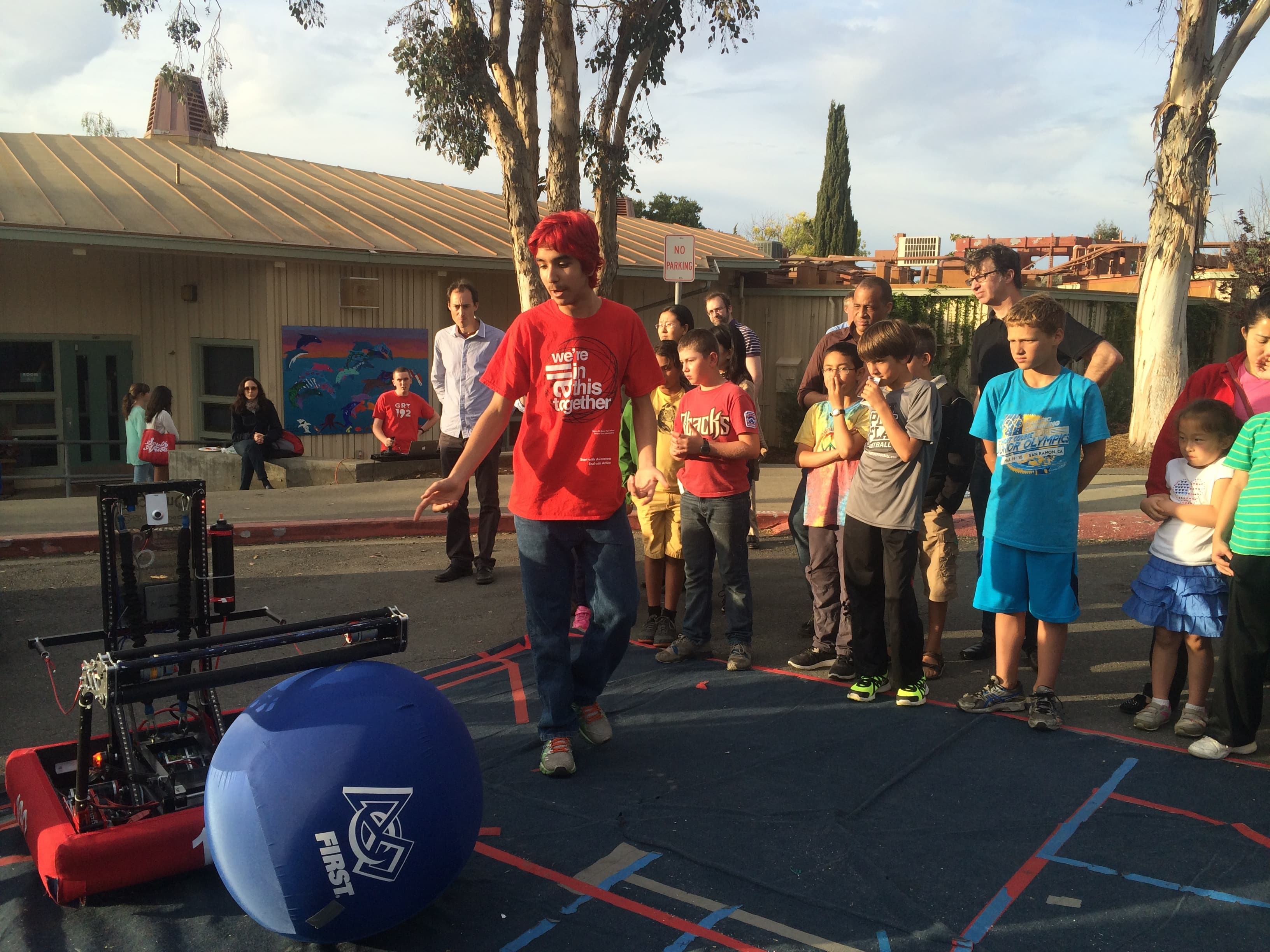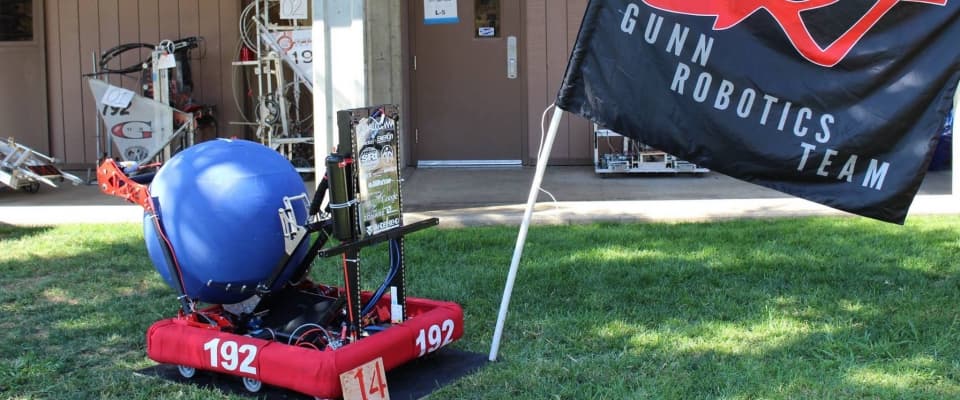FIRST | Aerial Assist
GRT 2013-2014
Aerial Assist is played by two competing Alliances of three Robots each on a flat 25 x 54 foot field, straddled by a lighting truss suspended just over five feet above the floor. The objective is to score as many balls in goals as possible during a 2 minute and 30 second match. The more Alliances score their ball in their goals, and the more they work together to do it, the more points their alliance receives.
The match begins with one 10-second Autonomous Period in which robots operate independently of driver. Each robot may begin with a ball and attempt to score it in a goal. Alliances earn bonus points for scoring balls in this mode and for any of their robots that move into their zones. Additionally, each high/low pair of goals will be designated hot for five seconds, but the order of which side is first is randomized. For each ball scored in a hot goal, the Alliance earns additional bonus points. page 8 / 93 For the rest of the match, drivers remotely control robots from behind a protective wall. Once all balls in autonomous are scored, only one ball is re-entered in to play, and the Alliances must cycle a single ball as many times as possible for the remainder of the match. With the single ball, they try to maximize their points earned by throwing balls over the truss, catching balls launched over the truss, and scoring in the high and low goals on the far side of the field. Alliances receive large bonuses for assists, which are earned for each robot that has possession of the ball in a zone as the ball moves down the field.
Our robot: Redshift
For Aerial Assist, GRT built Redshift, a robot weighing 120 pounds that features a triple-award winning drivetrain which can quickly pick up and shoot into the high goal from 20 feet away. Redshift has a lightweight and quick-to-deploy pickup that can reliably feed the ball into our high-powered shooter. A compact, high-efficiency, two-speed gearbox lets Redshift traverse the field very quickly, yet have enough torque to win most pushing matches.

Pickup
Redshift's ball pickup mechanism consists of a deployable roller held up by two PVC pipes. The roller is deployed by two car window motors with a large chain reduction in order to quickly and sturdily hold out the essential mechanism. The roller itself is powered by a single chain-driven motor, easily capable of dragging the large ball over the bumper.

Redshift outside the robotics shop.
Our team decided to use PVC tubing for the arm as a fail point, since in a high-speed game like Aerial Assist, any objects protruding from the bumper are bound to break. By making the arm something easily replaceable and breakable, we protect the more delicate metal parts and can quickly replace a part.
Drivetrain
Redshifts belt-in-tube west-coast drive allows for an efficient and compact power transfer, leaving more space for onboard mechanisms.
Shooter
A simple spring-powered catapult, Redshift's short throw allows us to fire from distance reliably and without any rev-up time. The catapult is powered by a custom ball-shift winch which will shift into neutral to release the ball and fire. Unlike traditional catapults, Redshift's catapult has practically no leverage, meaning the catapult is compact enough to fit entirely onto the base of the robot.